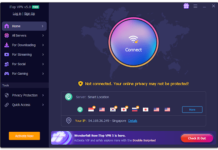With the passing of time, more advanced technologies have emerged as a result of developments and modifications to existing ideas that have contributed to the growth and efficiency of society. The 5th generation mobile network known as 5G is another product of this pattern, as humankind has continuously worked towards better, faster, and stronger progress.
Once upon a time, there was 1G. This was back in the 1980s with the accompanying analog device. Next came 2G in the early 1990s, which introduced the digital voice. In the early 2000s, we saw 3G and the rise of the iPhone and mobile data. This brings us to 4G, which most of us use on a daily basis for LTE and mobile broadband.
Consider looking into how to spark a digital transformation in order to better understand the processes, philosophies, and strategies behind what drives this consistent push for better, such as with mobile networks.
1G, 2G, 3G, and 4G all led to 5G, which is designed to provide more connectivity than was ever available before. We’re answering burning questions about the most recent development in mobile networks, the highly controversial and advanced 5G, which is already available to the public. Here’s everything you need to know.
What Is the Technology Behind 5g?
Like 4G LTE, 5G is also OFDM-based (Orthogonal frequency-division multiplexing) and operates based on the same mobile networking principles.
OFDM is s a type of digital transmission and a method of encoding digital data on multiple carrier frequencies, such as with cell phone companies and mobile networks. The new 5G NR (New Radio) air interface further advances OFDM to deliver a much higher degree of flexibility and scalability.
New 5G NR air interface design techniques are also a feature of 5G which will enable broader use of the mobile network, such as in mission-critical communications and connecting the massive IoT.
How Is 5G Better Than 4G?
5G will not only deliver faster, better mobile broadband services compared to 4G LTE, but it will also expand into new service areas such as IoT and cloud computing.
Here’s a Breakdown of How 5G Compares to 4G:
Faster: Can deliver up to 20 Gigabits-per-second (Gbps) and over 100 Megabits-per-second (Mbps).
Greater capacity: Designed to support a 100 times increase in traffic capacity and network efficiency.
Lower latency: Significantly lower latency to deliver more instantaneous, real-time access.
More unified and more features: Elevates existing services and supports new ones.
Uses spectrum: Gets the most out of every bit of spectrum across a wide array of available bands—from low bands to high bands.
Also Read: How Will The Technological Scenario Change The 5g Network?
What Industries Is 5G Being Used?
Broadly speaking, 5G is used across three main types of connected services, detailed below. One of the defining characteristics of 5G is that it is designed for the ability to flexibly support future services that are unknown today. This is known as forwarding compatibility.
Enhanced mobile broadband: Can be used to implement new immersive experiences such as VR and AR with faster, more uniform data rates, lower latency, and lower cost-per-bit.
Mission-critical communications: Can enable new services that can transform industries with highly reliable, available, low-latency connections. This includes remote control of critical infrastructure, vehicles, and medical procedures.
Massive IoT: Can seamlessly connect to virtually everything through the ability to scale down in data rates, power, and mobility—providing extremely low-cost connectivity solutions.
Where Is 5G Being Used?
Global operators started launching new 5G networks in early 2019. 5G mobile networks are expected to be available nationwide in many countries by 2020. All major Android phone manufacturers are commercializing 5G phones.
5G has been deployed in 20+ countries and counting, with 5G seeing a much faster rollout and adoption compared with 4G. Consumers are very excited about the high speeds and low latencies 5G brings to the table.
If users wish to use 5G, they would need to upgrade their mobile device to one that has the capacity to handle it. There are several new mobile phones available that are designed to support 5G, and multiple carriers across the world support the 5G wireless network. As the 5G rollout timeline progresses, more smartphones and carrier subscriptions will become available.
Soon, 5G technology and 5G compatible devices will become mainstream.
Also Read: The Cybersecurity Risks of Automotive Cloud Computing
What Are the Controversies Associated With 5G?
There are several 5G conspiracies out there, many of which peddled by people who associate the recent COVID-19 pandemic with the release and implementation for 5G, due to the timeline. These controversies claim 5G is a hazard to one’s health, can kill birds and plant life, and precipitated COVID-19.
There currently is no scientifically-backed evidence that validates these claims.











